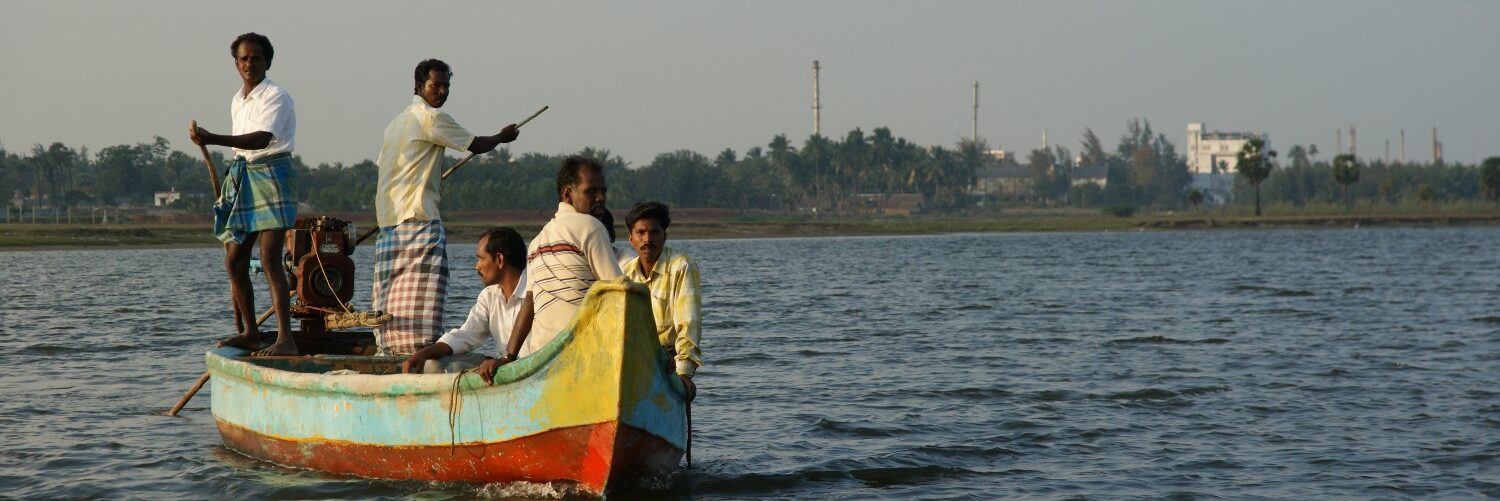30 Apr 2011
Gokul Chandrasekar
Express News Service
CHENNAI: In a bid to accelerate the lifting of moratorium imposed on new industries in Cuddalore by the Ministry of Environment and Forests, the Tamil Nadu Pollution Control Board (TNPCB) presented fraudulent data to the Centre, according to a report.
The report, brought out by the SIPCOT area community environmental monitors (SACEM) and prepared using data obtained from official records accessed through the Right to Information (RTI) Act and from international environmental law experts, said that the TNPCB and the Central Pollution Control Board (CPCB) had fudged data to keep the figures artificially low and push Cuddalore out of the list of “critically-polluted areas”.
For instance, the TNPCB action plan claimed that there had been no industrial discharges into Uppanar river or land or SIPCOT drains and that treated effluents were discharged into the Bay of Bengal through CUSECS a common effluent treatment and disposal system.
But, SACEM’s documentation in the region had recorded 15 incidents of effluent discharge into the land or village canal or Uppanar river last year.
“At least four fishermen fell sick due to water contamination,” said S Pugazendi of Cuddalore and an SACEM member.
Shweta Narayan of SACEM cited an example of massive discharge of effluents into SIPCOT drains soon after heavy rains in August last year. This contaminated the village canal.
“The TNPCB was forced by the residents to conduct a study and its results obtained through the RTI revealed that the water was contaminated with several parameters being above the prescribed limits. Following this, the TNPCB issued a showcause notice to the company in question. Despite this, the CPCB incorrectly reported that there were no discharges,” she added.
Narayan also questioned the functioning of the CUSECS, terming it an ‘illegal setup’ for effluent control in the industrial estate.
She claimed that it did not have a valid consent to operate, a fact revealed by the TNPCB’s official records.
On how CUSECS controlled pollution, the TNPCB data mentioned just one sample taken on October 25. It stated that only total residue chlorine was above the prescribed limits.
But SACEM documentation countered this. “The RTI data shows that totally 62 samples were taken. All of them violated one or more standards. But the TNPCB chose to present only one sample having the least pollution level,” said T Arulselvam of SACEM.
“Total Suspended Solids, Biochemical Oxygen Demand, Chemical Oxygen Demand, Nitrogen, Sulfide, Chlorine and Ammonia in most cases were above the CPCB prescribed limits,” he added.
In submissions made on air pollution, the TNPCB recognised Volatile Organic Compounds (VOCs) as a major public health problem in the region and even quoted the results provided by the National Environmental Engineering Research Institute. At the same time, it did not provide any data for the period during the preparation of its report.
But, three air samplings by SACEM during the same period tested positive for VOCs.
“Sample results revealed the presence of at least 20 toxic chemicals. Of this, at least 13 were beyond prescribed levels and seven were known carcinogens,” Narayan said.
The TNPCB, while compiling this report, not only ignored its own data, but also did not take into account the complaints of violation of environment norms from the community, alleged Cuddalore residents.
“During the oneyear moratorium period alone, at least 130 violations from SIPCOT were reported to TNPCB,” Narayan said.
Responding to the report, TNPCB member secretary R Ramachandran told Express that the board was taking steps to bring down pollution in Cuddalore. “I do not want to comment on the NGO’s report,” he said.
